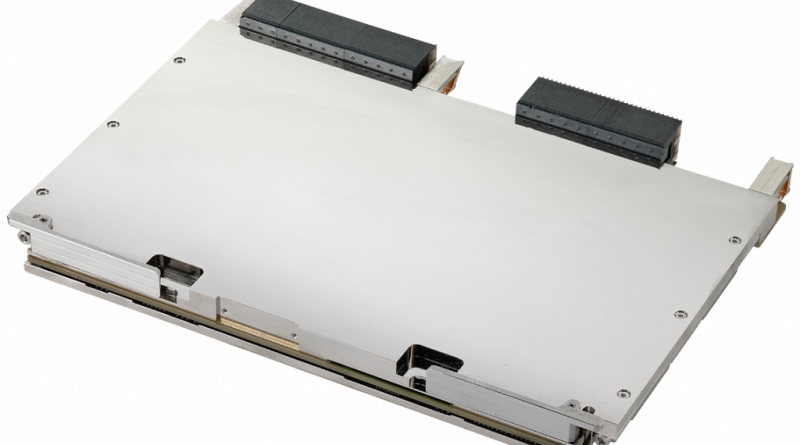EIZO Releases 6U OpenVPX/SOSA Aligned GPGPU Processing Card with Dual NVIDIA Turing RTX GPUs for Sensor and Data-Driven Missions
The Condor XR1 is designed with thermally efficient heat sink technology and can be configured to OpenVPX VITA-65 standards or SOSA-aligned slot profiles.
EIZO Rugged Solutions Inc. has introduced the Condor XR1 6U VPX Series – an OpenVPX™ 6U form factor high-performance computer (HPC) and GPGPU processing card based on the NVIDIA® Turing™ architecture using either the NVIDIA RTX5000™ or NVIDIA RTX3000™ platforms.
The Condor XR1 6U VPX Series offers High-Performance Embedded Computing Systems (HPEC) with a solution that delivers multi-card performance, resulting in reduced system SWaP and increased compute capabilities. When utilizing the RTX5000 (TU104) GPU, the card offers up to 6150 CUDA cores, 768 Tensor cores, 96 RT cores, and provides up to 18.98 TFLOP floating-point 32 performance with CUDA™ and OpenCL™ support.
With two NVIDIA RTX GPU variants available, the Condor XR1 6U VPX Series provides compute flexibility for systems that are power or thermal-sensitive and allows for future program upgrades. The cards support up to eight DisplayPort++ video outputs and have dedicated H.264/H.265 (HEVC) encoding/decoding engines.
Selwyn L. Henriques, president and CEO of EIZO Rugged Solutions, said: “The Condor XR1 6U VPX Series provides data-driven mission systems with a (6U single-slot) dual-GPU-based computing solution that meets the ever-evolving needs of ISR applications.”
“There is a big demand for enhanced processing capabilities in HPEC applications, as more and more sensors need to be processed at even faster rates. The challenge is designing a product that checks all boxes. The Condor XR1 6U VPX Series does just that – low-latency GPGPU processing including AI, flexible support for external high-speed I/O, and customizations to support many different design integrations utilizing the OpenVPX standard.”
Each GPU can be individually configured to route to various endpoint configurations, as each PCI-e switch also enables mating IO modules to communicate to the CPU or directly to the GPUs themselves via NVIDIA RDMA.
The NVIDIA RTX platform has increased performance in AI and deep learning and doubles the parallel processing capabilities from previous generations. This solution is ideal for sensor-intensive applications such as unmanned systems, airborne radar, Signal Intelligence (SIG-INT), Electronic Warfare (EW), and Digital Signal Processing (DSP).
This product is available in conduction-cooled or air-cooled formats and supports PCI Express Gen 3.0 (16, 8, or 4 lanes). This card is tested to MIL-STD-810 standards and is offered in either OpenVPX VITA 65 or SOSA-aligned configurations.

